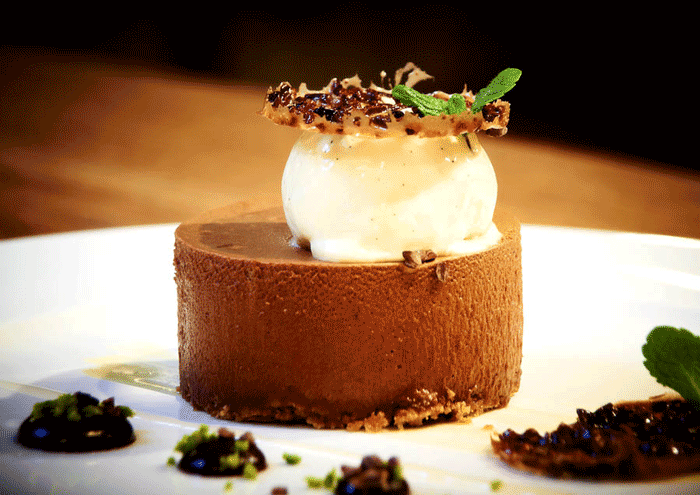How to serve your single malt
Author: Ronnie Cox
Convention might guide you away from matching whisky and food but in many countries local alcohol and local cuisine have grown up together. I’m thinking particularly in France and Italy where regional cuisine seems to magically pair regional wines. Perhaps, less obviously, this is so in Germany and now, in a minor way the ‘wine’ of Scotland is increasingly being paired with foods other than the “chieftain o’ the pudding race”.
My first gainful employment was with a sparkling wine company called Henkell Trocken in Wiesbaden on the Rhine, spitting distance from Hochheim, the trading town of delicious but now sadly (and undeservedly) shunned Hocks. In the workers’ canteen where I spent rather longer than I would have wished, it was very much a diet of cola and Wurst. Outside, on the other hand, the cuisine was always carefully crafted to fit the wine, not the other way round.
Matching food and spirits is more unconventional than food and wine – only, perhaps, the Swedes, Fins and Danes would disagree. In these Scandinavian countries there is a school of thought, entirely erroneous in my view, that aquavit neutralises the flavour of pickled herring. In my (thankfully limited) experience of the cheaper versions of this otherwise honourable spirit it is not the only thing it neutralises.
In Scotland over past centuries, food was more of a necessity than a delicacy. Whisky likewise. Previously, the words “gourmet” and “finesse” were reserved for the food and wine of our Continental cousins. But today with the increased accessibility to both good gastronomy and good alcohol, the relationship between the two is an area which has undergone much study and whisky advocates, chefs and media have gone some way to putting this to right. Over recent years, I have been guided in food and spirit matching by the inimitable Martine Nouet, the undisputed reine of whisky and food matching. French, but Islay-based, the ex-Editor of France’s Whisky Magazine has an enormous depth of experience. Her talent is to diplomatically bridge the gap between those advocating the delights of the kitchen and those promoting the content of the bottle, seeking out a harmony between the two which is greater than the sum of the parts.
Now, I am not a believer that whisky should be consumed throughout a meal. For a start the strength of the alcohol means taking great care. Dilution or a glass of water on the side is a prerequisite. Secondly, the flavours of the whisky can dominate flavours of food or, occasionally, vice versa so experimentation needs to be made. Experimentation is key. Thirdly, smokey whiskies can numb the palate to other more delicate flavours so I do not encourage their use at the beginning of a meal. Fourthly, the effect of texture is as important as flavour matching/contrasting. Lastly, always remember that grape and grain generally do not mix well in quantity…
The British, in general, and the Scots in particular, love puddings. Matching whiskies and desserts is relatively easy and it is here where I, as a whisky evangelist, would recommend the easiest (and most unexplored) pairing. The flavours of vanilla, butterscotch, caramel, dried fruits, chocolate are prominent in nearly all of the Glenrothes expressions and the fundamental is to find a common flavour bridge between the two. It can be as simple as one shared flavour, such as vanilla. Sticky toffee pudding, chocolate sponge, crème caramel, crepes suzette, chocolate mousse are no-brainers. I find the outcome of pairing any of these with sweet wines, however good they might be on their own, just too sweet. Generally whisky counter-balances the sweetness and cuts through the stickiness of such desserts delivering a quite delicious and, for the uninitiated, surprisingly uplifting experience. Give me a Vintage Glenrothes Single Malt any time. Unconventional it may be but give it a go.
My favourite pairing, by the way, would be a rich, dark (70% cocoa) chocolate mousse and The Glenrothes Vintage 1995. Delicious.



